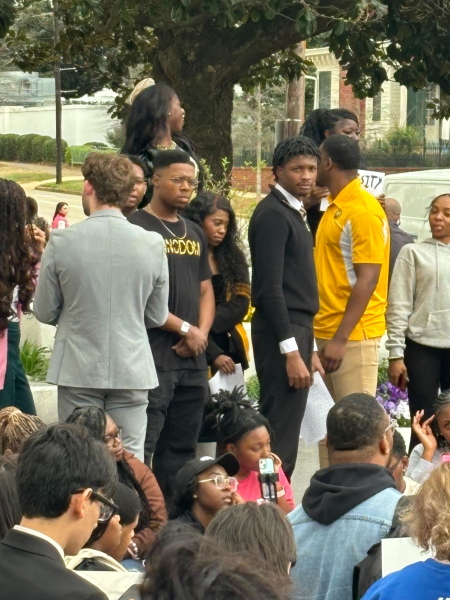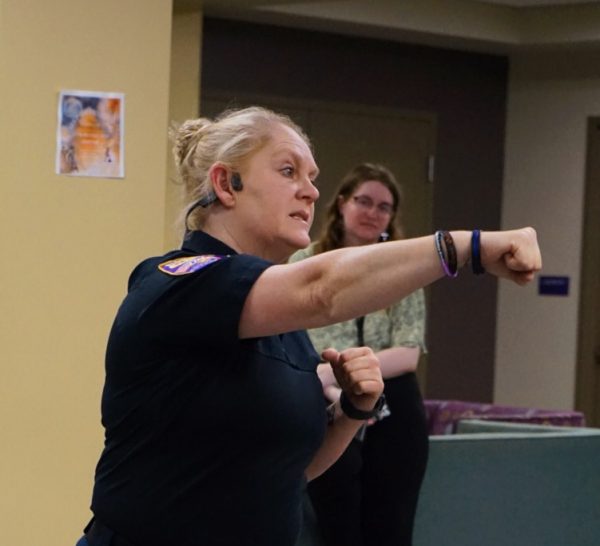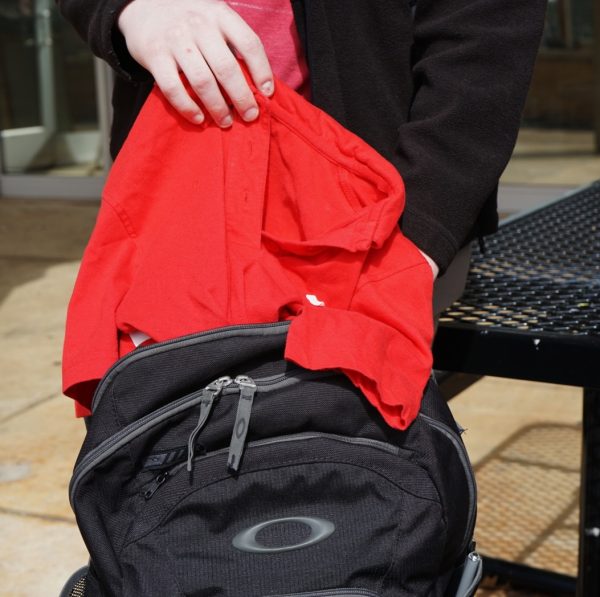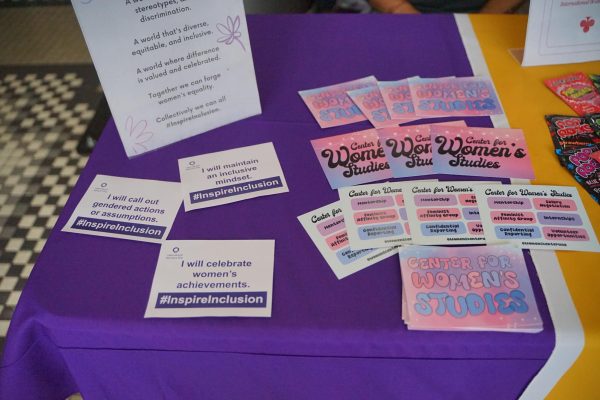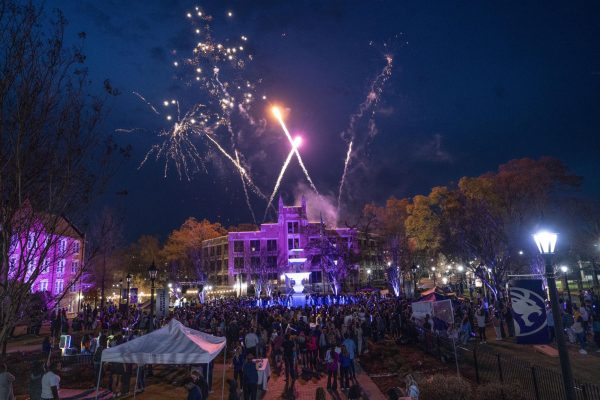UNA students and officials lobby at Higher Education Day
February 25, 2016
Every year, students and campus officials from across Alabama get up early and make the trek to Montgomery to stand on the capitol steps and rally for higher education funding.
UNA still ranks 13th out of 14 public universities in Alabama in terms of funding. Each year, the university receives about $5,000 per student, said Vice President for Business and Financial Affairs Clinton Carter.
“It’s very disappointing just because we want to keep our people who are graduating from high school (in Alabama) in our state so that they can increase their education and stay in Alabama,” said SGA Chair of Legislative Affairs Sarah Green. “Obviously, that’ll just impact our economy as a whole. I like that they’re giving to K-12, but I would like to see them give higher education more money. ”
Students march to the capitol, cheer and participate in competitions, she said. While this looks like just a good time, Green and Carter said the day holds much more importance.
“We might go down and pitch for (more funding) and have the ‘rah, rah’ type cheerleading atmosphere, but behind the scenes we’re also going to have our little, for lack of better words, ninja strike force budget team that’s going after specific earmarks,” Carter said. “That’s what we did last year, and we had a lot of success.”
These earmarks are government funds set aside for a certain project or plan.
Last year, UNA was one of the top schools who received the most increase in funding compared to the previous year, Carter said.
While students will not help legislators work on the budget, they still play an important role in the event, Green said.
“We’re definitely showing (legislators) that we care,” she said. “We’re showing the Alabama senators and reps that we’re voting students and that we care about higher education funding.”
Because UNA receives less funding per student compared to the median per student rate, which is about $7,500, Carter said he and the budget team will ask the legislators to fund UNA to the median amount per student.
“If you’re 13th or 14th in the bottom of the heap, you can’t get to the median overnight,” he said. “Our goal is to finish in the top three, if you will, every year. As long as we’re in the top five, I think we’re in good shape.”
This year, Carter said UNA will try to keep its $1 million science building earmark, protect it’s $1 million nursing building earmark and secure additional funds for a forensics lab.
“There’s a local initiative being driven by Northwest Alabama Council of Local Governments to stand up a forensics lab in conjunction with UNA,” Carter said. “To do that will require state funding. There’s no doubt.”
Adding the law will also help establish a forensics program of study at UNA.
Carter said he and his budget team will not only be fighting for more funds, but for a change in the funding model.
“We’re advocating for a complete breakdown of the current funding model,” he said. “Out with the old and in with the new. (We need) a new performance-based model that takes into consideration the number of full-time students as well as a number of varying performance metrics that can be considered.”
Because UNA’s enrollment increased this year, the university technically received less funding per student, Carter said.
“Altogether, we think we’ve got a very good shot,” he said. “I think if we can protect what we have, it would be a win. If we could carve out an extra earmark for forensics, it would be a home run.”



